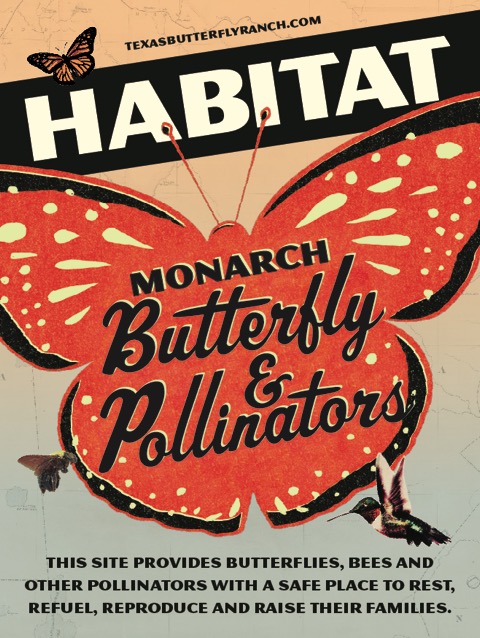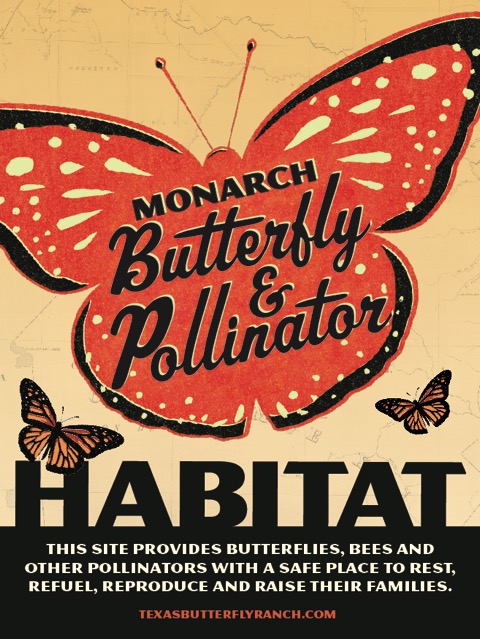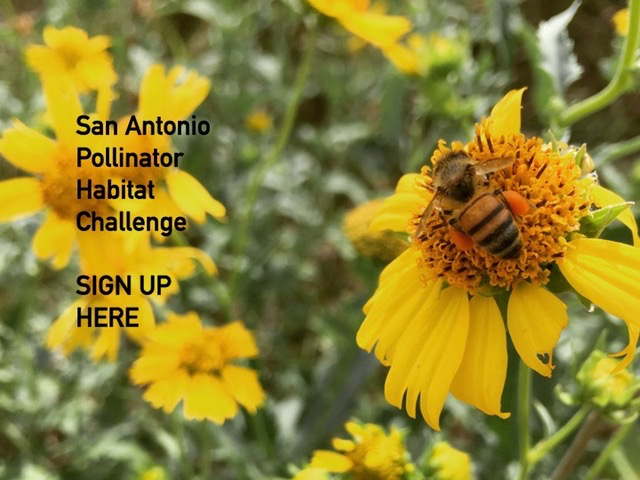We’ve been working with our community collaborators to execute San Antonio’s 300for300 pollinator habitat initiative, announced earlier this spring. And yes, we’re a little behind–but then a garden is a process, not a project, right?
So far, 48 pollinator gardeners have signed up to install a garden/habitat/pitstop where bees, butterflies, birds and other creature pollinators can rest, refuel and reproduce. That gets us 1/6th of the way toward our goal of creating 300 new pollinator gardens–30 in each of San Antonio’s 10 City Council Districts–in honor of San Antonio’s 300th birthday.
Here’s the current tally of pollinator habitat sign-ups by district:
District 1- 15
District 2 – 9
District 3 -3
District 4 – 0
District 5 – 1
District 6 – 1
District 7 – 4
District 8 – 9
District 9 – 4
District 10 – 1
TOTAL – 48
We asked our designer, Kevin Bowen of iambowen.com to use some of the graphics from our wildly successful Monarch Butterfly and Pollinator Festival, which is slated to return this fall, October 19 -21. We requested the sign be distinctive, beautiful, and educational–and that a passerby be able to read it from the street.
While yard signs serve as statements of purpose, we hope that these will educate the community about WHY the pollinator garden might appear “messy” at certain times of the year. A successful pollinator garden requires letting dead flowers go to seed to plant next year’s round of wildflowers. Also, dead stalks and leaves provide important refuge and shelter for overwintering bugs, birds and others. To have a sign in the location that specifies it as a “pollinator habitat” educates the community, helping people understand the method to the apparent madness.
Please vote for your favorite sign by clicking on the preferred version above. We’ll factor that into our decision-making before we invest in their production.
Ready to sign up to create a pollinator habitat? Here’s the link. The birds, bees and butterflies will thank you.
Related posts:
- Planting a pollinator garden? Here’s tips on how to do it
- Cowpen Daisy plays host plant to Bordered Patch Butterfly
- Frostweed earns its name with intriguing ice sculptures at first frost
- Mostly native urban butterfly garden outperforms lawn anytime
- New study: nectar plants more important than milkweed for monarch butterfly migration
Like what you’re reading? Don’t miss a single post from the Texas Butterfly Ranch. Sign up for email delivery below, like us on Facebook, or follow us on Twitter, @monikam.





I would appreciate a condensed list of the specific appropriate plants in the 3 categories required per the Pollinator Garden rules. If the list already exists, please send me that link.
It would be extremely helpful, rather than having to sift through all of the wonderful articles and links provided.
Thank you.
The initiative is spelled out here: https://texasbutterflyranch.com/300for300/
Seventh paragraph has the “specs” which are quite broad.
Minimum requirements for a pollinator habitat:
At least six different native and/or well adapted, noninvasive plants, including
At least two larval host plants (the plants on which butterflies lay their eggs)
At least two spring nectar plants (plants that bloom in the spring, providing energy/fuel)
At least two autumn nectar plants (plants that bloom in the fall, providing energy/fuel)
A diverse mix of spring, summer and fall blooms.
We also strongly encourage:
NO pesticides* in your habitat
Mulching the garden or installing dense plugs of plants to choke out undesirable weeds and conserve moisture
If using the non-native Tropical Milkweed (Asclepias curassavica) follow best practice and cut it back in late summer to keep migrating monarch butterflies moving and avoid possible disease build-up
Have a recessed area where water can puddle so butterflies can hydrate and take up necessary nutrients, and
Consider dead plants and spent seed heads as overwintering shelters for moths, butterflies, and other wildlife. Chop them down in late winter/early spring until after you’ve inspected them for eggs, cocoons and other signs of life.
More resrouces available here: https://texasbutterflyranch.com/resources/
–MM
I tried to click one of the pictures above but it doesn’t seem like anything is happening to cast a vote?
OOPS! You are right. Please try again, just fixed it–your click will register as a vote. Thanks for the heads’ up. Formatting snafu, sorry for the inconvenience. –MM
I planted a pocket prairie/butterfly garden this year.
I have two butterfly gardens going now in my front and back yard. I’ve also started converting a quarter of my yard into a small prairie using native Texas grasses.
Is there a way we can post photos of our gardens?
Post them on the Texas Butterfly Ranch Facebook page. Also, don’t forget to register your garden,if you’tr in the San Antonio area.